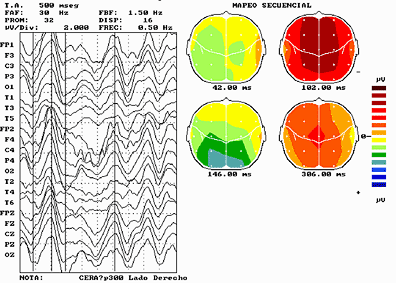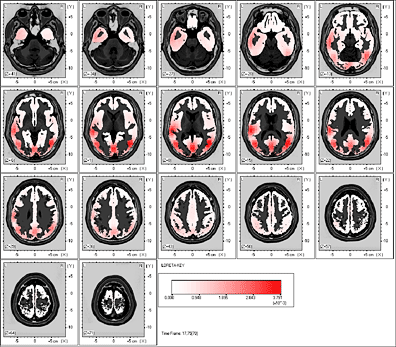Hearing investigations
From a neurophysiological point of view, studying of auditory alterations lies in applying a stimulus to those peripherical sensors being involved in hearing and to obtain an answer that could be graphically and quantitatively represented.
Methods of subjective studying, as liminal and supraliminal tonal audiometry as well as logoaudiometry give only an approaching idea of the auditory threshold and some features of the sort of auditory affection.
Mainly in central hypoacusis and in tinnitus, objective methods of studying are applied.
| Ear | Tympanometry - Impedance Audiometry Electrocochleography |
| Brainstem | Brainstem Auditory Evoked Potentials (BSRA) |
| Cerebral Cortex |
Brain Electrical Activity Mapping (BEAM) under auditory stimulation
Primary auditory cortex
Secondary auditory cortex
|

Mapping of auditory evoked potentials of primary and secondary auditory areas

Brain Electric Tomography: Normal projection of Auditory Potential. Atlas of Talairach
Through these methods, it is possible to establish a topodiagnosis of the affection, its degree and sort of the disfunction in order to settle the suitable therapy.
Our research and publications
- Archives for Sensology and Neurootology in Science and Practice - ASN-Volume 2 - 2004
Auditory Pathways: Spatial Distribution in Cortical Brain in Normal and Tinnitus Patients Studied Through Loreta
Dr.med. Guillermo O. Bertora, Dr.med. Julia M. Bergmann (Buenos Aires - Argentina)